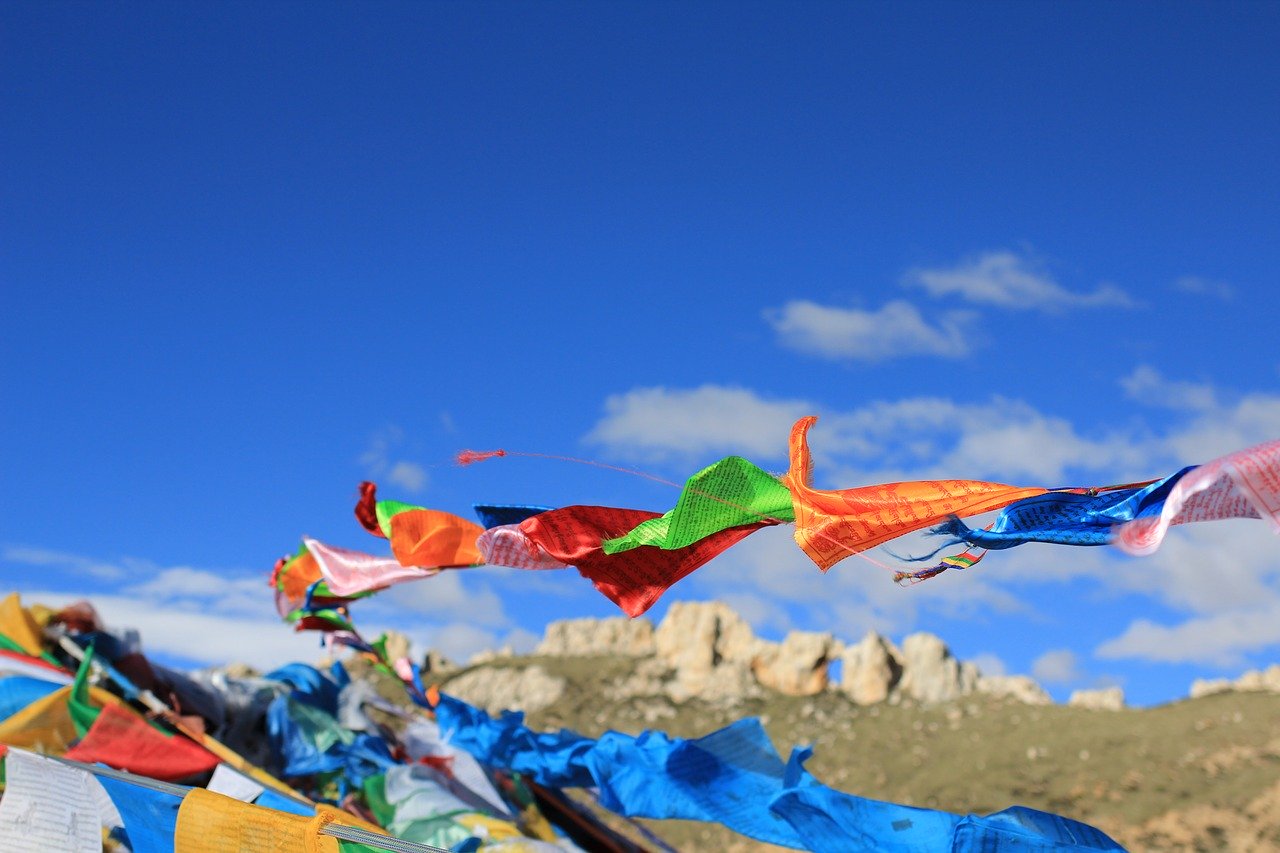Ache Lhamo, or Tibetan Opera, is one of Tibet’s most vibrant and unique customs. Its name means “sister goddess,” and each performance is part dance, part drama, and part lesson. Ache Lhamo dates back to around the 14th century, though it has roots in much older Buddhist and Tibetan traditions at least a thousand years older. In its present form, it began as a dance troupe moving around modern Tibet, seeking to raise funds to build bridges. From there, the form has evolved into a fully fledged theatrical tradition.
Tibetan Opera swings from the serious to the light-hearted, often breaking up dramatic moments with bits of satire and comedy. Performers and musicians typically accompany a single narrator, who is backed by other vocalists and dancers. There are many types of stories told, most with Buddhist themes, and new operas are still created every year. But as Tibetan culture faces pressure from China’s larger cultural majority, the future of Tibetan Opera is at stake. Modern performers have sought ways to keep their art relevant and exciting to new audiences while maintaining its roots and heritage.
Further Reading
“Tibetan Opera.” UNESCO, UNESCO, ich.unesco.org/en/RL/tibetan-opera-00208. Accessed 26 May 2020.
About TOTA
TOTA.world provides cultural information and sharing across the world to help you explore your Family’s Cultural History and create deep connections with the lives and cultures of your ancestors.


